|
Home > All Guitars
> All Guitars Carried >
Rock Star Owned Guitars

Most Current Eric Clapton Guitar
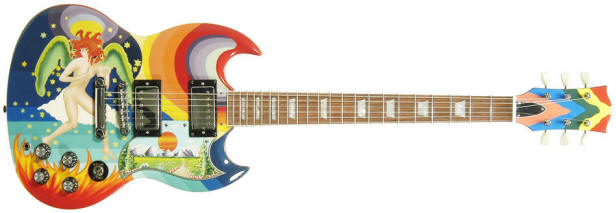
This Is What Clapton Played When He Was The Original Guitar God !!!!!
He doesn't like stock guitars obviously. He chooses to play multi color
custom models
"When He played the black guitar it was during the heroin
years"
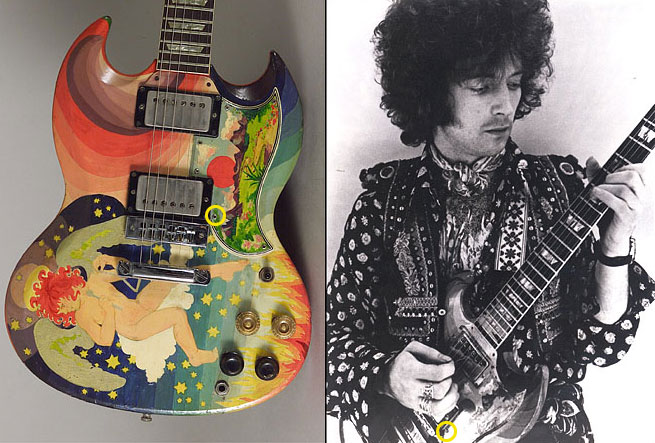
Clapton's Guitar was painted 3 or 4 times in it's life.
It broke at the headstock like
most Gibsons and also in the middle of the neck
This explains why it looked different !!
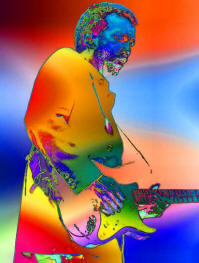  
You Will Notice Clapton Had A Lot Of Different Stage Images
He Wore his Hair Differently Quite A Bit.
When I Was 19 Years Old I Was
A Total Cream Freak
!!
I started to notice that Eric Clapton always appeared to look
different in all of his pictures and publicity shots.
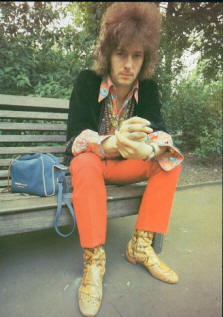 For
a musician known to strive for authenticity, Eric Clapton has always
been curiously obsessed For
a musician known to strive for authenticity, Eric Clapton has always
been curiously obsessed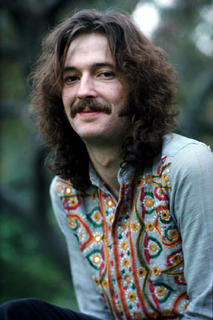 with appearances, seemingly as interested in sartorial details and
hairstyles as in the perfect guitar lick. It's hard to find two
photographs of him from the 1960s and early '70s that appear to be
the same person, and even after he formally launched his solo career
he switched looks frequently.
with appearances, seemingly as interested in sartorial details and
hairstyles as in the perfect guitar lick. It's hard to find two
photographs of him from the 1960s and early '70s that appear to be
the same person, and even after he formally launched his solo career
he switched looks frequently.
Thus, the album sleeve of his 13th solo studio album of new
material, Reptile, its "concept" credited to the recording artist,
seems significant. The album cover shows
a smiling Clapton as a child, and there are family photographs on
the back cover and in the booklet, along with a current photograph
of the artist, who turned 56 in the weeks following the album's
release, in an image that does nothing to hide the wrinkles of late
middle age. This photograph faces a sleeve note by Clapton that
begins with his explanation of the album title: "Where I come from,
the word 'reptile' is a term of endearment, used in much the same
way as 'toe rag' or 'moosh.'" (Thanks, Eric. Now, all listeners have
to do is find out what "toe rag" and "moosh" mean!) The note then
goes on to dedicate the album warmly to Clapton's uncle.
All of this might lead you to expect an unusually personal recording
from a man who has always spoken most eloquently with his guitar. If
so, you'd be disappointed. Reptile seems conceived as an album to
address all the disparate audiences Clapton has assembled over the
years. His core audience may think of him as the premier blues
guitarist of
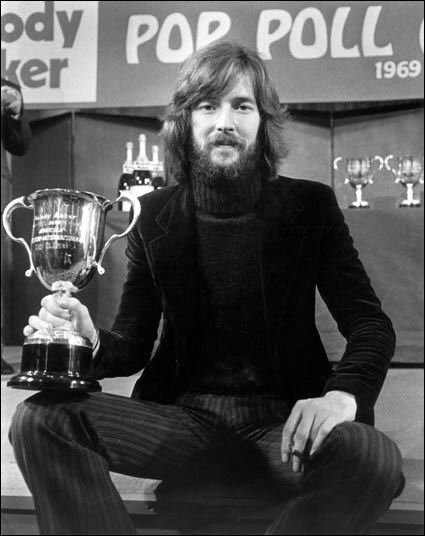 his
generation, but especially as a solo artist, he has also sought a
broader pop identity, and in the 1990s, with the hits "Tears in
Heaven" and "Change the World," he achieved it. The fans he earned
then will recognize the largely acoustic sound of such songs as
"Believe in Life," "Second Nature," and "Modern Girl." But those who
think of Clapton as the guy who plays "Cocaine" will be pleased with
his cover of another J.J. his
generation, but especially as a solo artist, he has also sought a
broader pop identity, and in the 1990s, with the hits "Tears in
Heaven" and "Change the World," he achieved it. The fans he earned
then will recognize the largely acoustic sound of such songs as
"Believe in Life," "Second Nature," and "Modern Girl." But those who
think of Clapton as the guy who plays "Cocaine" will be pleased with
his cover of another J.J.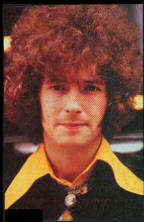 Cale song, "Travelin' Light," and by the time the album was in
record stores mainstream rock radio had already found "Superman
Inside," which sounds like many of his mid-tempo rock hits of the
'80s. This diversity is continued on less familiar material,
especially the many interesting cover songs. Somebody, perhaps the
artist himself, has been busy looking for old chestnuts,
since Reptile contains a wide variety of them: the 1930 jazz song "I
Want a Little Girl," recorded by McKinney's Cotton Pickers among
others; John Greer's 1952 R&B hit "Got You on My Mind"; Ray Charles'
1955 R&B hit "Come Back Baby"; James Taylor's 1972 hit "Don't Let Me
Be Lonely Tonight"; and Stevie Wonder's 1980 hit "I Ain't Gonna
Stand for It." The two earliest of these songs are old and obscure
enough that Clapton is able to make them his own, and he recasts the
Taylor song enough to re-invent it, but remaking songs by Charles
and Wonder means competing with them vocally, and as a singer
Clapton isn't up to the challenge. He is assisted by the current
five-man version of the Impressions, who do much to shore up his
vocal weaknesses, but he still isn't a disciplined or thoughtful
singer. Of course, when that distinctive electric guitar sound kicks
in, all is forgiven. Still, Reptile looks like an album that started
out to be more ambitious than it ended up being. There may be a song
here for each of the artist's constituencies (and, more important to
its commercial impact, for every major radio format except talk and
country), but as a whole the album doesn't add up to the statement
Clapton seems to have been hoping to make.
Cale song, "Travelin' Light," and by the time the album was in
record stores mainstream rock radio had already found "Superman
Inside," which sounds like many of his mid-tempo rock hits of the
'80s. This diversity is continued on less familiar material,
especially the many interesting cover songs. Somebody, perhaps the
artist himself, has been busy looking for old chestnuts,
since Reptile contains a wide variety of them: the 1930 jazz song "I
Want a Little Girl," recorded by McKinney's Cotton Pickers among
others; John Greer's 1952 R&B hit "Got You on My Mind"; Ray Charles'
1955 R&B hit "Come Back Baby"; James Taylor's 1972 hit "Don't Let Me
Be Lonely Tonight"; and Stevie Wonder's 1980 hit "I Ain't Gonna
Stand for It." The two earliest of these songs are old and obscure
enough that Clapton is able to make them his own, and he recasts the
Taylor song enough to re-invent it, but remaking songs by Charles
and Wonder means competing with them vocally, and as a singer
Clapton isn't up to the challenge. He is assisted by the current
five-man version of the Impressions, who do much to shore up his
vocal weaknesses, but he still isn't a disciplined or thoughtful
singer. Of course, when that distinctive electric guitar sound kicks
in, all is forgiven. Still, Reptile looks like an album that started
out to be more ambitious than it ended up being. There may be a song
here for each of the artist's constituencies (and, more important to
its commercial impact, for every major radio format except talk and
country), but as a whole the album doesn't add up to the statement
Clapton seems to have been hoping to make. |
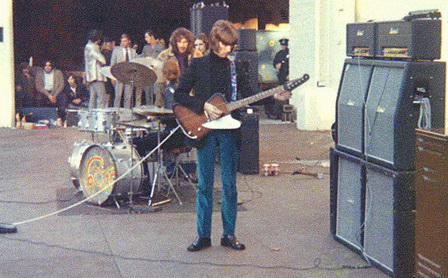
Clapton Pageboy Look
Photo Taken In the 60's At the Oakdale Theater In Connecticut
Some Friends Of Mine "The Bluebeats" Opened For Cream that night.
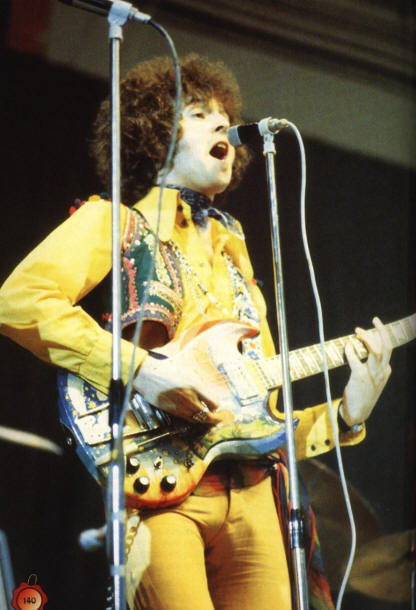
|




 For
a musician known to strive for authenticity, Eric Clapton has always
been curiously obsessed
For
a musician known to strive for authenticity, Eric Clapton has always
been curiously obsessed with appearances, seemingly as interested in sartorial details and
hairstyles as in the perfect guitar lick. It's hard to find two
photographs of him from the 1960s and early '70s that appear to be
the same person, and even after he formally launched his solo career
he switched looks frequently.
with appearances, seemingly as interested in sartorial details and
hairstyles as in the perfect guitar lick. It's hard to find two
photographs of him from the 1960s and early '70s that appear to be
the same person, and even after he formally launched his solo career
he switched looks frequently.  his
generation, but especially as a solo artist, he has also sought a
broader pop identity, and in the 1990s, with the hits "Tears in
Heaven" and "Change the World," he achieved it. The fans he earned
then will recognize the largely acoustic sound of such songs as
"Believe in Life," "Second Nature," and "Modern Girl." But those who
think of Clapton as the guy who plays "Cocaine" will be pleased with
his cover of another J.J.
his
generation, but especially as a solo artist, he has also sought a
broader pop identity, and in the 1990s, with the hits "Tears in
Heaven" and "Change the World," he achieved it. The fans he earned
then will recognize the largely acoustic sound of such songs as
"Believe in Life," "Second Nature," and "Modern Girl." But those who
think of Clapton as the guy who plays "Cocaine" will be pleased with
his cover of another J.J. Cale song, "Travelin' Light," and by the time the album was in
record stores mainstream rock radio had already found "Superman
Inside," which sounds like many of his mid-tempo rock hits of the
'80s. This diversity is continued on less familiar material,
especially the many interesting cover songs. Somebody, perhaps the
artist himself, has been busy looking for old chestnut
Cale song, "Travelin' Light," and by the time the album was in
record stores mainstream rock radio had already found "Superman
Inside," which sounds like many of his mid-tempo rock hits of the
'80s. This diversity is continued on less familiar material,
especially the many interesting cover songs. Somebody, perhaps the
artist himself, has been busy looking for old chestnut
